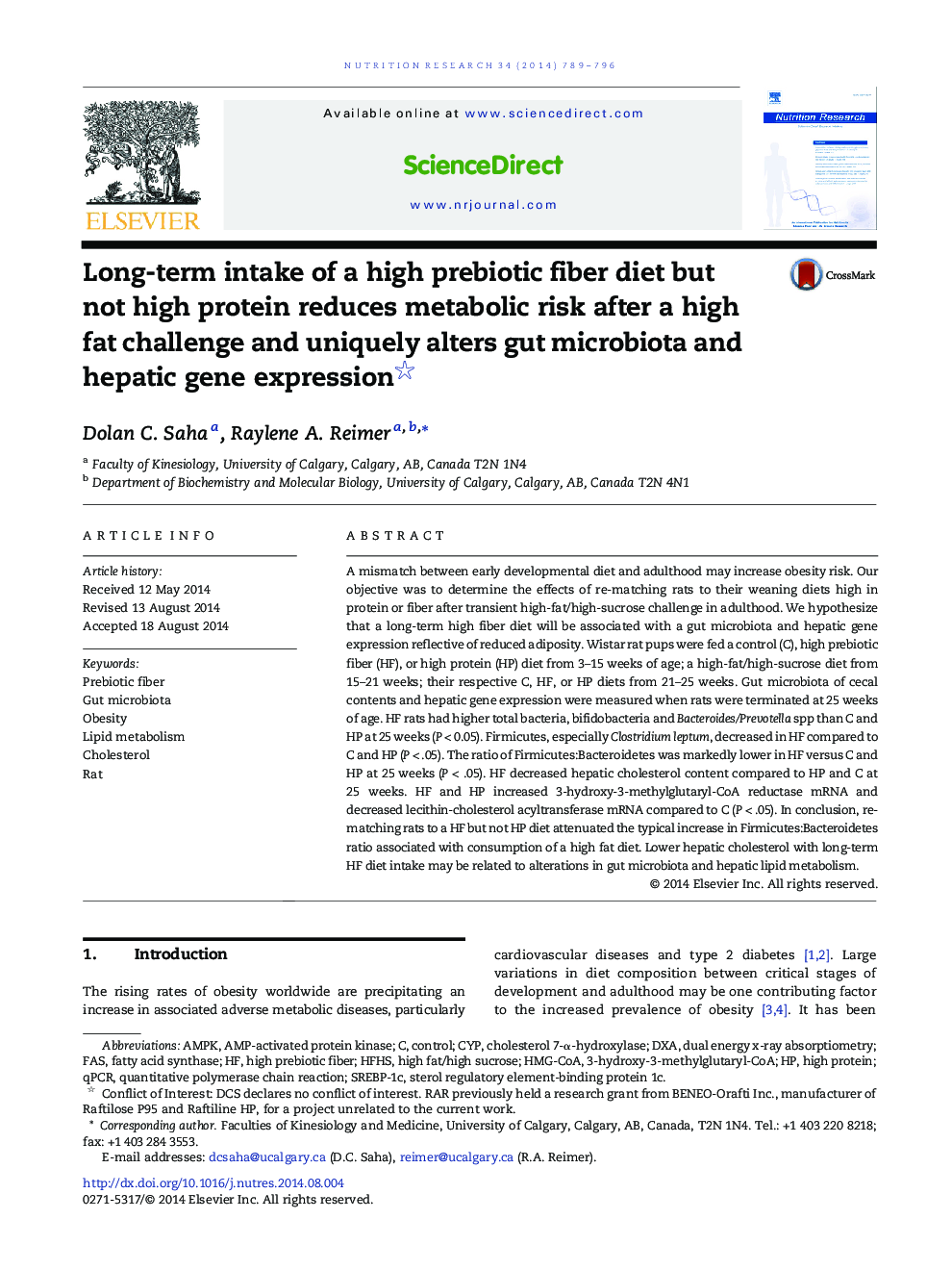| Article ID | Journal | Published Year | Pages | File Type |
|---|---|---|---|---|
| 2809020 | Nutrition Research | 2014 | 8 Pages |
A mismatch between early developmental diet and adulthood may increase obesity risk. Our objective was to determine the effects of re-matching rats to their weaning diets high in protein or fiber after transient high-fat/high-sucrose challenge in adulthood. We hypothesize that a long-term high fiber diet will be associated with a gut microbiota and hepatic gene expression reflective of reduced adiposity. Wistar rat pups were fed a control (C), high prebiotic fiber (HF), or high protein (HP) diet from 3–15 weeks of age; a high-fat/high-sucrose diet from 15–21 weeks; their respective C, HF, or HP diets from 21–25 weeks. Gut microbiota of cecal contents and hepatic gene expression were measured when rats were terminated at 25 weeks of age. HF rats had higher total bacteria, bifidobacteria and Bacteroides/Prevotella spp than C and HP at 25 weeks (P < 0.05). Firmicutes, especially Clostridium leptum, decreased in HF compared to C and HP (P < .05). The ratio of Firmicutes:Bacteroidetes was markedly lower in HF versus C and HP at 25 weeks (P < .05). HF decreased hepatic cholesterol content compared to HP and C at 25 weeks. HF and HP increased 3-hydroxy-3-methylglutaryl-CoA reductase mRNA and decreased lecithin-cholesterol acyltransferase mRNA compared to C (P < .05). In conclusion, re-matching rats to a HF but not HP diet attenuated the typical increase in Firmicutes:Bacteroidetes ratio associated with consumption of a high fat diet. Lower hepatic cholesterol with long-term HF diet intake may be related to alterations in gut microbiota and hepatic lipid metabolism.
